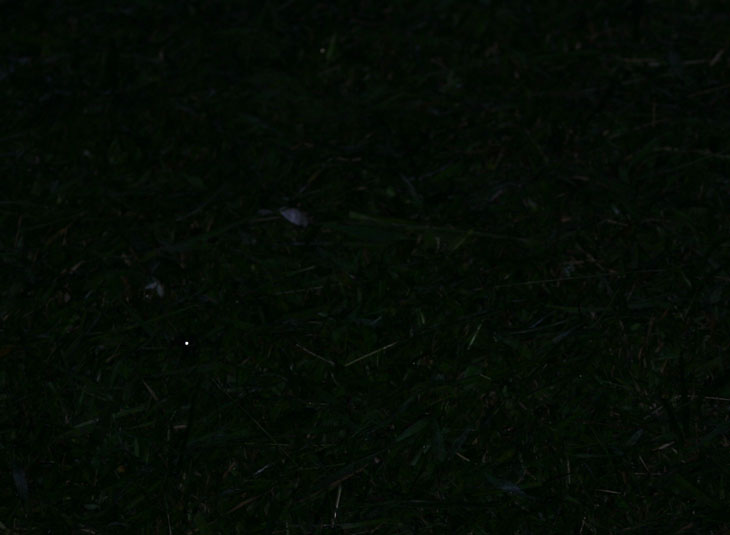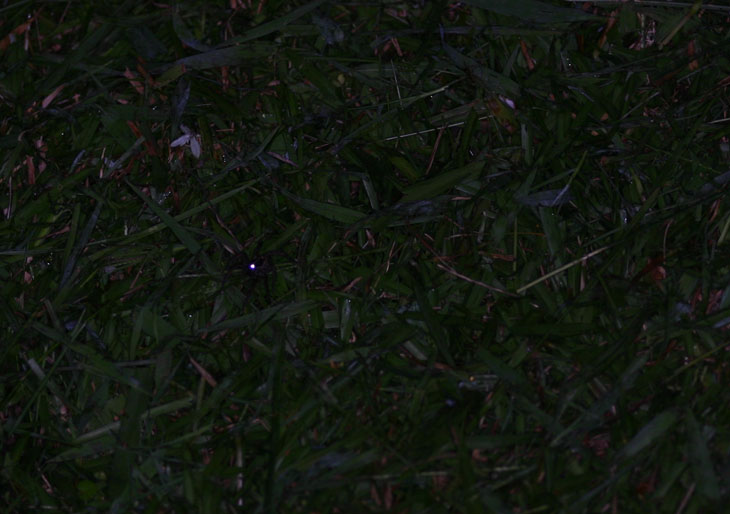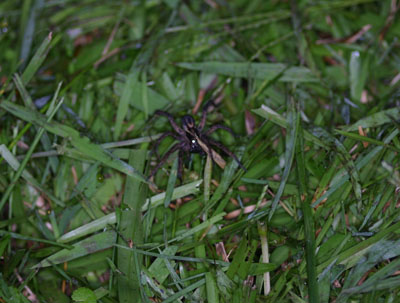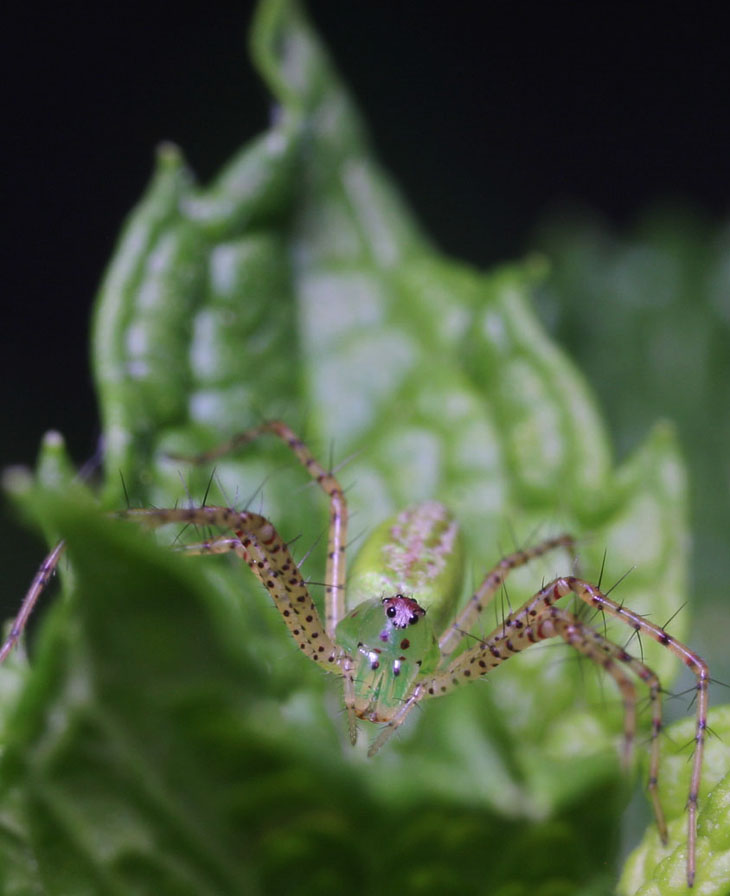I’m very fond of pushing different perspectives, because I believe it helps us to understand many things better, and changes our predefined views of our world. Some perspectives, however, are heavily ingrained, and perhaps even self-perpetuating, so introducing something ‘new’ is complicated.
With the lead-in out of the way, let’s take consciousness, and to do so, we’ll begin with the official definitions. Merriam Webster says it’s
1 a : the quality or state of being aware especially of something within oneself
b : the state or fact of being conscious of an external object, state, or fact
c : AWARENESS; especially : concern for some social or political cause
2 : the state of being characterized by sensation, emotion, volition, and thought : MIND
3 : the totality of conscious states of an individual
4 : the normal state of conscious life <regained consciousness>
5 : the upper level of mental life of which the person is aware as contrasted with unconscious processes
While Wikipedia starts with
Consciousness is the quality or state of being aware of an external object or something within oneself. It has been defined as: subjectivity, awareness, sentience, the ability to experience or to feel, wakefulness, having a sense of selfhood, and the executive control system of the mind.
…and in true Wikipedia fashion, goes on for paragraphs. What becomes clear, in both cases and all other sources as well, is that one can follow explanatory links almost indefinitely, seeking to define awareness and will and so on.
Mostly, what is being referred to here is simply sensory input – perceiving physical surroundings to some level, and this level isn’t always very distinct; we have subconscious awareness, and unconscious responses, and even the ability to drive to work and remember almost nothing of the details of the roads. Then there are states of consciousness, such as differentiating between being asleep and awake, but mostly this refers to the body ignoring various levels of sensory input – the alarm usually gets through, while the TV may not. We understand that we may ‘tune out’ certain accepted sounds, but to do so, the brain has to perceive them and filter them according to acceptability, so it is conscious of them to a significant extent, even when it does not activate any kind of response from ‘us’ by interrupting our dreams. Or such sounds may incorporate into dreams and influence our imaginations therein. The dividing line is not distinct at all, making consciousness rather hard to interpret in any given usage.
Then comes all the fun bits, such as the distinction of mind from our mushy brains, creating a duality that opens up loads of philosophical debate. This mind even persists, according to a large number of religions, after the physical body ceases functioning, and in many cases yet perceives sensory input, though for what purpose remains to be determined. There are also the special properties we supposedly possess that all other species lack, but what exactly these are is unclear as well.
In some cases, the mind is considered the sum total of our experiences, the matrix of sensory input and personal emphasis on such, a unique property. The brain is considered the storage medium or even the computer running the program, analogies that do more harm than promoting understanding. The mind is damaged by any damage to the brain, sometimes in seemingly disproportionate ways, such as the case of Phineas Gage. The mind may not function as well if the brain’s development has been hampered in some way, the same way that interfering with any other part of our body may affect our abilities – it even falters with minor changes to the chemicals supplied to the brain (such as narcotics) or serious breaks in routine (such as lack of sleep.) The differentiation of mind and brain is more a convention, a tradition if you like, than a supportable concept.
So many of these concepts were established long before we had the faintest understanding of our biology – in fact, defined, redefined, debated, and treatised for centuries without the barest clue what went on in our brains. To say that consciousness is culturally supported is extreme understatement. So it’s very hard to do a simple little thing and ignore it entirely, wipe every last vestige of its definition and implications from our minds, and see if we arrive at it by examining only what we have evidence of.
Biologically, we are organisms with external sensing functions, able to perceive our environment primarily in ways that are important to our survival. The most extraordinary development that we’re aware of is the ability to form abstracts, imagining someone’s reaction to our requests for a date or picturing how this painting will look on our walls. While it’s safe to say that we have developed this in excess of any other species, we cannot rule in the slightest on how much other species still possess this ability – it is, when you think about it, pattern recognition. This person smiles at me every time I speak to them, so I extrapolate that to mean they will be receptive to my overtures (usually incorrectly, but that could be just me.) How different is this from the chimp that uses twigs to fish for termites, or for that matter any learned behavior?
What about the function of sensory input itself? There are countless things we remain unaware of, and certain kinds of input that register far more strongly than others, such as recognizing particular voices even if they’re quieter than the babble that surrounds us. We can also miss something blindingly obvious (completely changing our perception of obvious) while we’re concentrating on a particular task – the importance of our sensory input is subjective depending on the circumstances, giving no delineation of something we could call consciousness.
Descartes’ famous quote, “I think, therefore I am,” is considered rather profound, basically an admission that the only thing we can actually be sure of is our own consciousness; instead, it’s an excellent example of philosophy carried to pointless extremes. While questioning whether some sensory input has been interpreted correctly is an integral part of critical thinking, doubting all of it obviously cannot go anywhere, and produces no beneficial effect in any way. At the same time, there are vast areas of neural function that take place with only the barest nod towards what we consider cognition, the ‘thinking’ part of the brain. We’re able to recognize this in many other species, confident that the honeybee does not think about its mortality when it stings, and the caracal does not wonder what it’s like to be a hyrax – we believe such species simply follow instinct, while we alone are sapient, willed, and above all capable of directing our lives. The problem is, we have no way of establishing this difference quantifiably, and there’s a good chance this is simply self-absorption; ego relates directly to survival, since the organism that does not place importance on itself does not compare, or compete, well against another that does. Emotionally favoring ourselves is not any different biologically from seeking sexual partners or avoiding pain.
 Ah, but we are aware that we’re thinking! This is the self-awareness, sentience, supercool bit! So, let’s try an exercise: what are we unaware of? Take your time. Self-awareness is the same kind of nonsense as the Weak Anthropic Principle, which says that we exist in a universe that has the conditions for our existence; we will not see a universe in which we cannot exist, and we have no awareness of how much we’re unaware. Another species observing us might find it amusing how unaware we are, such as our inability to see infra-red, or why we’re entertained by skateboards, or why we feel better about ourselves when someone else demonstrates that they’re lesser in some way (as if this was an accomplishment for us.) And as near as we can tell, all of our decisions are biased by unconscious traits, past experiences, personal preferences, and even physical condition of the body – we may not even be able to fulfill the idea of ‘rational‘ that we extoll. The abstracts that we consider part of higher cognition could be entirely imaginary, subjective constructs of an organism with certain survival demands – not a special level of awareness, but a structure to our perception that we cannot escape. For example, most reptiles likely have no concept of ‘evil’ since they have no social structure, and thus no use for it. So does this make us more aware, or just different?
Ah, but we are aware that we’re thinking! This is the self-awareness, sentience, supercool bit! So, let’s try an exercise: what are we unaware of? Take your time. Self-awareness is the same kind of nonsense as the Weak Anthropic Principle, which says that we exist in a universe that has the conditions for our existence; we will not see a universe in which we cannot exist, and we have no awareness of how much we’re unaware. Another species observing us might find it amusing how unaware we are, such as our inability to see infra-red, or why we’re entertained by skateboards, or why we feel better about ourselves when someone else demonstrates that they’re lesser in some way (as if this was an accomplishment for us.) And as near as we can tell, all of our decisions are biased by unconscious traits, past experiences, personal preferences, and even physical condition of the body – we may not even be able to fulfill the idea of ‘rational‘ that we extoll. The abstracts that we consider part of higher cognition could be entirely imaginary, subjective constructs of an organism with certain survival demands – not a special level of awareness, but a structure to our perception that we cannot escape. For example, most reptiles likely have no concept of ‘evil’ since they have no social structure, and thus no use for it. So does this make us more aware, or just different?
The biggest failure of consciousness is that it doesn’t actually fulfill any function – it gives us nothing specific or unique, and doesn’t explain any physiological state of even abstract idea firmly. In fact, the only thing it really seems to accomplish is reinforcing the idea that we’re special as a species – with the distinct possibility that this is a common trait among living organisms. The curious thing to consider is how much worthless concepts like consciousness actually affect us negatively, by wasting our time with misdirection and functionless debates where we could instead be more aware of our development as a species. Perhaps it’s only because such things are not too deadly that we haven’t simply evolved away from them yet.
So, what happens when we discard consciousness as a concept? We’ll keep the meaning that translates as attentive, like being conscious of what someone said, and the one that means alert/awake. But get rid of anything resembling consciousness as a trait of the mind, and stuff like conscious decisions. What’s the result?
Well, first, the recognition that there is no dividing line, but a spectrum of mental activity ranging from mere reflex to formulating the phrasing within a blog post, and the underlying ideas to communicate. [Do you like how I did that? I hinted that blogging is the highest level of mental activity available. Did I do that intentionally, or prompted by egotistic influences within?] We stop thinking of our mental processes as ‘special,’ and start thinking in terms of evolved beings with lots of behavioral traits, not entirely unlike the bear that protects her cubs. Perhaps we even realize that a complete understanding of our own brains is highly improbable, because they simply don’t have the structure to fully self-comprehend, even if we’re pretty sure we’re higher on that scale than a starfish.
The mind disappears of course, and that pretty much trashes the soul as well. So transcendence and various spiritual ‘connections’ go away too (don’t let the door hit you in the ass on the way out.) But wait! What does that say for all those mystical experiences people keep reporting that they’ve had? Is this dismissing a wealth of human experience rather capriciously? That all depends; we’re a species with a history of being dead wrong about a lot of things, from witch hunts to the geometric perfection of matter to freeing demons by drilling holes in our skulls. It’s ludicrous to think that sometime between our very recent past and now we crossed some threshold where we can no longer fool ourselves (one of those great ironies; believing we’re free from self-delusion is self-delusion – gotta love it.) But, but… if they were wrong, then there must be other ways to explain their experiences, right? (Don’t worry – I’m halting the Clint Eastwood tactics here.)
 This process is better approached from the other side, which is to view any such experience critically from the start, and try to see if it can clear the “fake/hoax/wishful thinking” bar, but either way requires the same methodology. The tests are simple, even though they might have a wide variety among them: recounting solid information not available through any other means (such as words or objects hidden someplace,) retention of all aspects of the mind/soul after brain damage, even a religious experience with a high degree of ‘accuracy’ from someone who has no interest in that religion. It seems reasonable to expect that transcendent experiences should demonstrate something not just miraculous, but with evidence on a greater scale than personal emotions, yet even the rather mundane experiences don’t hold up to examination, and often the only thing we can use for judgment is whether or not we should take someone at their word. And we must realize that having such an experience makes someone special, which is more than enough motivation to misinterpret some sensory input, much less perpetrate a hoax, so the standards to judge such things should always take this into account.
This process is better approached from the other side, which is to view any such experience critically from the start, and try to see if it can clear the “fake/hoax/wishful thinking” bar, but either way requires the same methodology. The tests are simple, even though they might have a wide variety among them: recounting solid information not available through any other means (such as words or objects hidden someplace,) retention of all aspects of the mind/soul after brain damage, even a religious experience with a high degree of ‘accuracy’ from someone who has no interest in that religion. It seems reasonable to expect that transcendent experiences should demonstrate something not just miraculous, but with evidence on a greater scale than personal emotions, yet even the rather mundane experiences don’t hold up to examination, and often the only thing we can use for judgment is whether or not we should take someone at their word. And we must realize that having such an experience makes someone special, which is more than enough motivation to misinterpret some sensory input, much less perpetrate a hoax, so the standards to judge such things should always take this into account.
We’ll leave behind spirituality to switch to the medical aspect of it. Someone in what is called a ‘persistent vegetative state,’ or perhaps a coma they’re considered unlikely to come out of, has a level of awareness that is unknown; they may respond to certain kinds of sensory input, such as a family member’s voice, and not to others. They may display spikes of brainwave activity (measured by EEG) that correspond with normal averages, yet these are isolated and, above all, lack the kind of response that makes someone functional. So how conscious can we say they are?
Stop right there, because that’s where the stupid reliance on this concept introduces its unwarranted assumptions. There is no line to be crossed, no ‘black/white’ situation to be found. Decisions on whether or not to continue life support often revolve around the belief that the comatose person could maintain a will to live, and might in essence be a fully functioning brain trapped in an unresponsive body. Yet we already know it’s not fully functioning, but more to the point, why would brainwave activity be the crucial factor? Imagine actually having a fully-functioning brain, in a body with full external sensory input but no motive functionality – no moving around, no talking, no signaling, no responses to anything in any manner. Some people – I am not one of them – do not have to imagine this, because they’ve already experienced it in the form of sleep paralysis, where the motor functions are disabled, including even the ability to respond to adrenaline, while a certain percentage of external awareness persists (though the line between real awareness and imaginary dream scenarios, such as the approaching alien or rapist, gets blurred frequently.) There are occasional case studies of people who remained resistant to the dissociative properties of anesthetic and were aware of everything going on during surgery, in some cases fully capable of feeling pain as well, but unable to do anything about it. It’s easy to see that brain activity isn’t really beneficial in these cases, and can easily be said to be far less beneficial than none at all.
I can only confidently introduce my own perspective here, but I imagine it’s shared by a large percentage of people: my brain activity is meaningless without the external bits, and if there’s no chance that I will regain the external bits, the brain is completely and utterly useless. I could have the most astounding insight in the world, simultaneously unifying physics and explaining why hetero women always become infatuated with gay men, but it means nothing if it remains solely inside my head. And it’s safe to say that this scenario effectively denies the free will definition that so many people cling to, if that perspective illustrates the situation better. What if we are simply a brain in a jar, and we know it? We should also consider the idea of incomplete consciousness, mere moments of lucidity or fragmentary awareness, like barely waking enough to hear voices in the next room but having no context for them. Add to this the bare fact we have no way of actually telling how conscious someone is; EEGs measure microcharges in the brain, not thoughts. Not only is this simply a electrochemical artifact, it’s not even limited to neurons, as the infamous Jell-O experiment demonstrated.
The philosophical conundrum of consciousness, and the ridiculous amount of time wasted trying to find a distinctive definition for it, really has no practical application. And I’m sorry to go through all that jazz above before introducing something that should be at the very beginning, but it probably wouldn’t have had the same impact had it come first. So here’s the little rule that has served me well, one I wish more people used as a starting guideline: if we are spending any time at all trying to pin down a definition, we have absolutely no reason to be using the word or concept in the first place. Yet its frequent use in our culture, dating back a very long time, has convinced us of its importance even as the meaning vacillates wildly. Sometimes we have to consider that a long provenance doesn’t mean it still works – or, in fact, ever did.


 I didn’t quite have focus nailed for this one, so I’m not showing it any larger, and typically by this distance you would have stopped seeing the reflection. The various species of wolf spiders are the easiest to find, because they tend to be very active at night and their eyes possess this characteristic the strongest that I’ve found, able to be seen from several meters away, but I’ve produced the effect from many other species as well, including black widows. It’s just the structure of their eyes. If you’re creeped out by spiders, this can be a bit sobering, as you realize how many might be found in your lawn; at the same time, it’s always been like this, and no harm came to you, right? Most spiders are actually very shy and avoid any kind of contact – I often have to be cautious in my approach for photos because many species try to hide. Wolf spiders are more mellow, and often don’t care how close you get, nor are they the least aggressive. This little exercise is actually a great way to start getting over a fear of spiders, since you can see for yourself (at whatever distance you like) how little they affect anything. Then, if by chance they run across you, you can shrug it off as easily as you might a bird flying through the yard.
I didn’t quite have focus nailed for this one, so I’m not showing it any larger, and typically by this distance you would have stopped seeing the reflection. The various species of wolf spiders are the easiest to find, because they tend to be very active at night and their eyes possess this characteristic the strongest that I’ve found, able to be seen from several meters away, but I’ve produced the effect from many other species as well, including black widows. It’s just the structure of their eyes. If you’re creeped out by spiders, this can be a bit sobering, as you realize how many might be found in your lawn; at the same time, it’s always been like this, and no harm came to you, right? Most spiders are actually very shy and avoid any kind of contact – I often have to be cautious in my approach for photos because many species try to hide. Wolf spiders are more mellow, and often don’t care how close you get, nor are they the least aggressive. This little exercise is actually a great way to start getting over a fear of spiders, since you can see for yourself (at whatever distance you like) how little they affect anything. Then, if by chance they run across you, you can shrug it off as easily as you might a bird flying through the yard.






















































 Photography is an art form, not in that it’s
Photography is an art form, not in that it’s  Yesterday I briefly tried out a
Yesterday I briefly tried out a 

 Arrived early to meet with a student, spent some time investigating what the park had to offer. I just happened to like this one, largely because of the focal plane capturing two separate subjects so well. And there’s something about the marvelous shape of the buds.
Arrived early to meet with a student, spent some time investigating what the park had to offer. I just happened to like this one, largely because of the focal plane capturing two separate subjects so well. And there’s something about the marvelous shape of the buds.
 The culprit is a type of leafhopper known as a sharpshooter, in this case a broad-headed sharpshooter (Oncometopia orbona.) Colorful and rather large for a leafhopper at over 10mm for an adult, they get their ‘sharpshooter’ appellation from their habit, which has been a source of frustration to me for a few years now. Like most of the Cicadoidea superfamily to which they belong, they feed on plant saps obtained through a needlelike proboscis, and process it in large volumes. That which is not needed is expelled from t’other end with the exuberance of a suddenly-diaper-free infant, leaving copious amounts of sticky/oily residue everywhere that the arc reaches. I have to admit to some jealousy, since with an extra glass of iced tea I can spell my entire name, but I’ve never been called a sharpshooter. Broad-headed or otherwise…
The culprit is a type of leafhopper known as a sharpshooter, in this case a broad-headed sharpshooter (Oncometopia orbona.) Colorful and rather large for a leafhopper at over 10mm for an adult, they get their ‘sharpshooter’ appellation from their habit, which has been a source of frustration to me for a few years now. Like most of the Cicadoidea superfamily to which they belong, they feed on plant saps obtained through a needlelike proboscis, and process it in large volumes. That which is not needed is expelled from t’other end with the exuberance of a suddenly-diaper-free infant, leaving copious amounts of sticky/oily residue everywhere that the arc reaches. I have to admit to some jealousy, since with an extra glass of iced tea I can spell my entire name, but I’ve never been called a sharpshooter. Broad-headed or otherwise…
 A few years back I’d seen the same thing, only this time with a glassy-winged sharpshooter (one gets the impression that whoever was naming these was tired and not trying for originality anymore, but anyway, the scientific name is Homalodisca vitripennis.) Even in open shade without direct sunlight, the flash is plainly visible, and I spent a lot of time in the botanical garden where I’d spotted it, trying to get an image of the effect. Let’s put it this way: the effect lasts less that 1/15th of a second, probably closer to 1/100th if I’m any judge. Shutter speed is 1/200th, strobe duration less than 1/1,000th. Human response time is
A few years back I’d seen the same thing, only this time with a glassy-winged sharpshooter (one gets the impression that whoever was naming these was tired and not trying for originality anymore, but anyway, the scientific name is Homalodisca vitripennis.) Even in open shade without direct sunlight, the flash is plainly visible, and I spent a lot of time in the botanical garden where I’d spotted it, trying to get an image of the effect. Let’s put it this way: the effect lasts less that 1/15th of a second, probably closer to 1/100th if I’m any judge. Shutter speed is 1/200th, strobe duration less than 1/1,000th. Human response time is 

 On Saturday, I was chasing bug pics when I got an expected call to meet with friends, and snagged one frame of some amorous flies on the parsley flowers before I had to put down the camera (sacrilege I know) and head off. I couldn’t see these eyes in the viewfinder (for the reason illustrated at right,) so the surprise came much later when I unloaded the memory card.
On Saturday, I was chasing bug pics when I got an expected call to meet with friends, and snagged one frame of some amorous flies on the parsley flowers before I had to put down the camera (sacrilege I know) and head off. I couldn’t see these eyes in the viewfinder (for the reason illustrated at right,) so the surprise came much later when I unloaded the memory card.
 Ah, but we are aware that we’re thinking! This is the self-awareness, sentience, supercool bit! So, let’s try an exercise: what are we unaware of? Take your time. Self-awareness is the same kind of nonsense as the Weak Anthropic Principle, which says that we exist in a universe that has the conditions for our existence; we will not see a universe in which we cannot exist, and we have no awareness of how much we’re unaware. Another species observing us might find it amusing how unaware we are, such as our inability to see infra-red, or why we’re entertained by skateboards, or why we feel better about ourselves when someone else demonstrates that they’re lesser in some way (as if this was an accomplishment for us.) And as near as we can tell, all of our decisions are biased by unconscious traits, past experiences, personal preferences, and even physical condition of the body – we may not even be able to fulfill the idea of ‘
Ah, but we are aware that we’re thinking! This is the self-awareness, sentience, supercool bit! So, let’s try an exercise: what are we unaware of? Take your time. Self-awareness is the same kind of nonsense as the Weak Anthropic Principle, which says that we exist in a universe that has the conditions for our existence; we will not see a universe in which we cannot exist, and we have no awareness of how much we’re unaware. Another species observing us might find it amusing how unaware we are, such as our inability to see infra-red, or why we’re entertained by skateboards, or why we feel better about ourselves when someone else demonstrates that they’re lesser in some way (as if this was an accomplishment for us.) And as near as we can tell, all of our decisions are biased by unconscious traits, past experiences, personal preferences, and even physical condition of the body – we may not even be able to fulfill the idea of ‘ This process is better approached from the other side, which is to view any such experience critically from the start, and try to see if it can clear the “fake/hoax/wishful thinking” bar, but either way requires the same methodology. The tests are simple, even though they might have a wide variety among them: recounting solid information not available through any other means (such as words or objects hidden someplace,) retention of all aspects of the mind/soul after brain damage, even a religious experience with a high degree of ‘accuracy’ from someone who has no interest in that religion. It seems reasonable to expect that transcendent experiences should demonstrate something not just miraculous, but with evidence on a greater scale than personal emotions, yet even the rather mundane experiences don’t hold up to examination, and often the only thing we can use for judgment is whether or not we should take someone at their word. And we must realize that having such an experience makes someone special, which is more than enough motivation to misinterpret some sensory input, much less perpetrate a hoax, so the standards to judge such things should always take this into account.
This process is better approached from the other side, which is to view any such experience critically from the start, and try to see if it can clear the “fake/hoax/wishful thinking” bar, but either way requires the same methodology. The tests are simple, even though they might have a wide variety among them: recounting solid information not available through any other means (such as words or objects hidden someplace,) retention of all aspects of the mind/soul after brain damage, even a religious experience with a high degree of ‘accuracy’ from someone who has no interest in that religion. It seems reasonable to expect that transcendent experiences should demonstrate something not just miraculous, but with evidence on a greater scale than personal emotions, yet even the rather mundane experiences don’t hold up to examination, and often the only thing we can use for judgment is whether or not we should take someone at their word. And we must realize that having such an experience makes someone special, which is more than enough motivation to misinterpret some sensory input, much less perpetrate a hoax, so the standards to judge such things should always take this into account.
 But while I was at it, I did a few sequences that showed the movement of the clouds, and combined these into an animated gif (pronounced “jiggawatt.”) The shots also showed the movement of the moon across the frame, as well as some tripod wiggle since I wasn’t shooting with a remote release, but I re-centered the moon in editing. Mostly, anyway – if you watch close you can see a twitch where I didn’t do the best job.
But while I was at it, I did a few sequences that showed the movement of the clouds, and combined these into an animated gif (pronounced “jiggawatt.”) The shots also showed the movement of the moon across the frame, as well as some tripod wiggle since I wasn’t shooting with a remote release, but I re-centered the moon in editing. Mostly, anyway – if you watch close you can see a twitch where I didn’t do the best job.